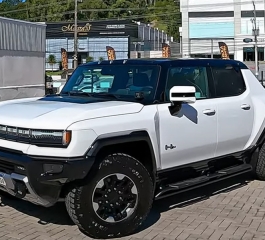In addition, it should be mentioned that the main reasons for the loss of a biome are the construction of residential and industrial areas, and the exploitation of their resources.
What is a biome?
A biome is a geographic area defined by the predominance of its vegetation, climate, fauna, soils and other characteristic environmental factors.
In this particular space on Earth, a large community of plants and animals interact in complex ways with the physical environment around them.
The classification of biomes occurs mainly according to the types of vegetation they present, ranging from tropical forests to deserts, passing through savannahs, tundras, temperate forests and others.
Each biome has a unique structure and is home to a diversity of species that have adapted to the particular environment in which they thrive.
It is important to highlight that the borders of biomes are not rigidly defined and, frequently, they exhibit internal variations in their territorial extension.
In addition, the interactions between the various biomes play a key role in maintaining the planet’s ecological balance.
Brazilian Biomes
Brazil contains 6 different biomes. Find out a little more about each of them below:
1.Amazonia:
The biome that occupies the largest area in the country is the Amazon, covering almost half of the territory.
Location: Amapá, Acre, Amazonas, Roraima, Pará; In addition, it also covers part of Rondônia, Mato Grosso, Maranhão and Tocantins.
Climate:The climate of the biome is equatorial, characterized by high temperatures and abundant rainfall.
Vegetation:The vegetation is represented by the Amazon rainforest, an exuberant and dense tropical forest, which is home to large trees and is considered the largest in the world.
Animals:As for fauna, the biome is home to a variety of notable animals, such as the cururu toad, the rattlesnake, the pink dolphin and the capybara.
2.Cerrado:
The Cerrado, a savannah rich in biodiversity, covers the second largest area of Brazil as a biome.
Location:The biome is present in the states of Amapá, Maranhão, Piauí, Rondônia, Distrito Federal, Goiás, Mato Grosso, Mato Grosso do Sul, Minas Gerais, São Paulo, Tocantins and Bahia.
Climate:The biome has a seasonal tropical climate, characterized by periods of rain and drought.
Vegetation:In general, the biome has small trees, grasses and shrubs.
Animals:Some of the known species found in the biome include the tapir, jaguar, maned wolf and giant anteater.
3.Caatinga:
The Caatinga, a region characterized by a dry climate, occupies a vast area in the northeastern states of Brazil, where its components have adapted to this environment.
Location: Present in Alagoas, Bahia, Ceará, Paraíba, Pernambuco, Piauí, Rio Grande do Norte, Sergipe and Minas Gerais.
Climate: Predominantly semi-arid, with high temperatures practically all year round and irregular rainfall.
Vegetation: Composed of small and medium-sized plants, highly resistant to the lack of rainfall.
Animals: It is home to a rich diversity of species of Brazilian fauna, including mammals, reptiles, birds and amphibians, such as the agouti, the opossum and the cavy.
4.Atlantic Forest:
The Atlantic Forest covers the coastline of Brazil and has the second largest forest in the country.
Location:As for location, it is present in the states of Espírito Santo, Rio de Janeiro and Santa Catarina, covering a large part of Paraná, in addition to small portions of eleven other states.
Climate:The predominant climate in the region is tropical-humid, but it also has microclimates, such as the high-altitude tropical and humid coastal tropical.
Vegetation:The vegetation is characterized by large and medium-sized trees, forming a dense and closed forest. Among the characteristic species of the biome, the brazilwood and the ipê stand out.
Animals:As for fauna, the Atlantic Forest is home to several known species, such as the yellow-headed woodpecker, the golden lion tamarin, the broad-snouted alligator -yellow and the sloth.
5.Pantanal:
The Pantanal, in Brazil, is home to the largest floodplain in the world and is the smallest biome in extension in the country.
Location: the states of Mato Grosso and Mato Grosso do Sul.
Climate:The predominant climate is tropical continental, with the summer characterized by heavy rains and the winter being dry.
Vegetation:The biome presents regions with aquatic, semi-aquatic and terrestrial vegetation.
[articles-photos]
Animals:In the biome, we find some known species, such as the blue macaw, the puma, the tuiuiú and the tapir.
6.Pampa:
The Pampa is the only Brazilian biome located exclusively in a single state and is widely used as pasture for large herds.
Location:The only Brazilian biome restricted to just one state, Rio Grande do Sul.
Climate: The temperate climate, with average temperatures between 13 °C and 17 °C
Vegetation: Consisting of herbaceous species, with a great diversity of grasses, shrubs and small trees.
Animals:The fauna is expressive, with almost 500 species of birds, among them the rhea, the joão-de-arro and the thrush
Conclusion
In short, biomes are essential to the regions where they are found. In Brazil, there are six distinct biomes: Amazon, Cerrado, Caatinga, Atlantic Forest, Pantanal and Pampa. In addition, each one has unique characteristics of vegetation, climate and fauna.
Therefore, it is essential to preserve them, as they are home to a great diversity of species. However, urbanization and exploitation threaten these precious areas.
Therefore, awareness and adoption of sustainable practices are crucial to protecting these vital ecosystems, ensuring the survival of species and the sustainability of our planet.


